Nitrogen isotopes
Type of resources
Topics
Keywords
Contact for the resource
Provided by
Years
Formats
Representation types
Update frequencies
-
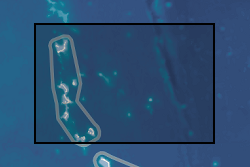
Measurements of nitrogen and carbon abundances and isotopic ratios for deep-marine ferromanganese crusts and nodules from the modern ocean. This reservoir has not previously investigated as an archive of nitrogen isotopes. The results reveal unusually negative values, interpreted as evidence of partial ammonium oxidation succeeded by adsorption of nitrogen oxides to the mineral surface. More details can be found in Stüeken , E E & Bau , M 2023 , Geochemical Perspectives Letters , vol. 25 , pp. 13-17 . https://doi.org/10.7185/geochemlet.2308 Geographical extent: Central Pacific seafloor, between Kiribati and Wallis and Futuna (0° – 10° S and 175° E – 175° W)
-
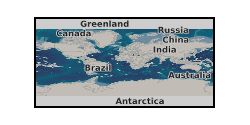
Organic carbon, bulk nitrogen isotope and bulk sulfur isotope and abundance data and metal abundance data from metapelites of the 3.7Ga Isua Supracrustal Belt. For more details, see Stüeken, E.E., Boocock, T., Szilas, K., Mikhail, S. and Gardiner, N.J., 2021. Reconstructing nitrogen sources to Earth’s earliest biosphere at 3.7 Ga. Frontiers in Earth Science, 9, p.675726.
-
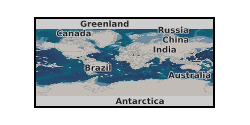
Organic carbon and bulk nitrogen isotope and abundance data and metal abundance data from the Mesoarchean VMS deposit and associated strata. Detailed information is given in Stueeken, E.E., Boocock, T.J., Robinson, A., Mikhail, S. and Johnson, B.W., 2021. Hydrothermal recycling of sedimentary ammonium into oceanic crust and the Archean ocean at 3.24 Ga. Geology, 49(7), pp.822-826.
-
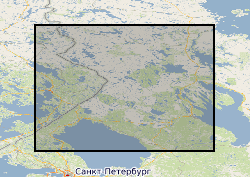
Demonstration of hydrothermal ammonium mobilization in the Paleoproterozoic with possible implications for biological productivity. The data include organic carbon and nitrogen abundances and isotopic ratios, as well as metal abundances. Samples span from sedimentary rocks to altered igneous rocks, where lithologies are provided in the CN data file. The N-enrichment in the usually N-poor igneous rocks indicates transfer of ammonium from organic-rich sediments and can be used to estimate the ammonium concentration of the hydrothermal fluid at the time of deposition. More details are provided in Stüeken, E.E., Kirsimäe, K., Lepland, A. and Prave, A.R., 2023, Astrobiology, 23(2), pp. 195-212.
-

The dataset includes organic carbon and nitrogen isotope data, as well as elemental abundance data from marine sediments that were obtained by push corers from hydrothermal seeps in the modern Guaymas Basin, Gulf of Mexico. Also included are pore water measurements of ammonium concentrations and nitrogen isotopes of dissolved ammonium, as well as sediment temperatures.
-

Organic carbon and nitrogen and bulk nitrogen isotope data and metal abundance data for siltstones and shales of the Mesoproterozoic Diabaig Formation. For a detailed description and interpretation, see Stüeken, E.E. and Prave, A.R., 2022. Diagenetic nutrient supplies to the Proterozoic biosphere archived in divergent nitrogen isotopic ratios between kerogen and silicate minerals. Geobiology.
-

Stable isotope data of organic carbon, nitrogen and sulfur as well as trace elements are used to explore how proxies with differing residence times in seawater respond to changes in the basin’s connectivity to the open ocean. The results show that species with a short residence time, such as nitrate and rare earth elements, may be more sensitive to geologically brief fluctuations in oceanographic conditions than long-lived species like sulfate. Details about the methodology and sampling strategy can be found in Stu¨eken, E.E., Viehmann, S. and Hohl, S.V., 2023, ACS Earth and Space Chemistry, 7(7), pp.1337-1349.
-

Nitrogen isotopic composition of microbial biomass grown in the laboratory under N2-fixing conditions. Also included are meta-data that describe the experimental conditions. The conditions were chosen to mimic specific parameters of the early Earth, in particular variable CO2 and O2 supplies, to test if d15N data recorded in ancient biomass in the rock record is affected. Also included are data from the wider literature for comparison, as well as the results of statistical tests.
-

Nitrogen isotope and abundance data from brine seeps in the Gulf of Mexico. Three data tables show (1) Electrical Conductivity data for three sediment cores, (2) carbon and nitrogen data from all sediment cores investigated in this study, and (3) ammonium concentrations and isotopic data from brine pool samples. The results show high enrichments of ammonium in the brines, indicating that the brines actively mobilize bioavailable nitrogen back into the water column. Isotopic data reveal evidence of dissimilatory nitrate reduction to ammonium at the brine-seawater interface. Brine seeps have long been implicated in the formation of sediment-hosted hydrothermal ore deposits. Our results support the notion that brines may have stimulated biological productivity, facilitating trapping of metals in brine seep environments.
-
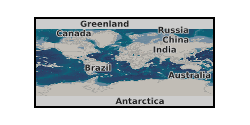
Dual stable isotope analysis comprising nitrogen-15 and oxygen-18 ratios for groundwater samples collected every 2-3 months over one hydrogeological year from the East Riding of Yorkshire. Isotopic ratios for nitrogen-15, oxygen-18 are both presented as raw and processed to NAIR and VSMOW, respectively. The data are in the form of a Microsoft Excel workbook containing Isotope Ratio Mass Spectrometer runs. The data were collected to understand key sources of nitrate contamination in Chalk groundwater and the dominant processes they undergo, and the extent of any attenuation. The Chalk catchments and the River Terrace Gravel catchment were compared, allowing conclusions to be drawn on the role of nitrate transformation, and the dominant location of transformations, to increase understanding of nitrate dynamics in agricultural systems. Groundwater samples were collected by the University of Leeds, the Environment Agency, Yorkshire Water and South East Water. Nitrate isolation and data interpretation carried out by Josephine McSherry, supervised by L. Jared West and Simon Bottrell. Mass spectrometry was carried out by Rob Newton and Bob Jamieson at the University of Leeds. No isotopic data are absent from the dataset, however oxygen contamination (resulting from the isolation method and since resolved) severely affected run O34b-O. Hydrochemical data relevant to the groundwater samples are not included as they are the property of the Environment Agency, Yorkshire Water or South East Water.
 NERC Data Catalogue Service
NERC Data Catalogue Service